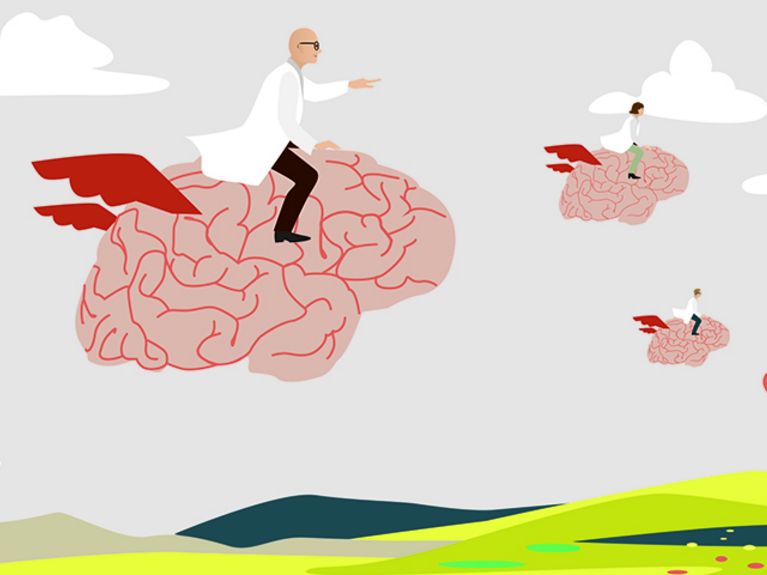Two points of view
Brain drain: a threat to the European Research Area?

Image: Sylvia Wolf
Brain drain exists not only worldwide, but also within Europe: talented young researchers are leaving their home countries. Mobility in science is not unusual - but what happens to the EU if some regions permanently lose their research potential to others? Two points of view.
Jean-Eric Paquet, Director General DG Research and Innovation, European Commission. Image: Sylvia Wolf
By jointly addressing this challenge, we can find solutions that enable a more fair and balanced brain circulation in the EU.
An open labour market encouraging free and balanced circulation of researchers has been at the core of the European Research Area (ERA). Much has been achieved in the last 20 years, but a step change is required, as the role R&I has to play in society and economy has dramatically changed.
The philosophy of the ERA is working together with the Member States to achieve common objectives. Brain drain should not be seen only as a national matter, but as an issue that the EU is facing both internally and towards other global competitors. By jointly addressing this challenge, we can find solutions that enable a more fair and balanced brain circulation in the EU, as well as attract and retain talents to the Union. Brain drain is mostly affecting those countries in the EU and neighborhood that are still catching up in terms of their R&I performance. Excellent research environments are a prerequisite; attractive working conditions and decent remuneration a necessity; often, these require reforms of national R&I systems. There are no quick solutions. Each country is different, and while some measures may work in one country, it does not mean they can be easily replicated to others.
The key is a well-balanced brain circulation. On the way into this direction, policy reforms and support tools at both European and national level are needed. Solutions can encompass initiatives building on a shared agenda between education, research and innovation policy, institutional transformations in universities and research organisations, notably on skills development related to entrepreneurship, open science and innovation, support for intersectoral and interdisciplinary mobility, as well as putting in place inclusive working and employment conditions that stimulate excellence across the EU. Capacity building actions as those implemented in the Widening programme part under Horizon 2020 and Horizon Europe can also create a more favourable working environment for talents in catching up countries. The promotion of common standards for researchers and institutions in Europe will further contribute to shaping the European researcher’s identity and enhancing the attractiveness of the overall research profession.
No Member State can address these challenges alone, as the Commission by itself cannot make the difference alone. Advancing Europe together should be a joint effort!
Bernd Rech is Scientific Director of the Helmholtz-Zentrum Berlin für Materialien und Energie. Image: Sylvia Wolf
"It is necessary to spread the attractiveness of research and development more evenly across Europe".
Science thrives on clever minds and free exchange of knowledge, the so-called brain circulation. But inward migration (brain gain) and outward migration of the highly qualified (brain drain), both elements in this exchange, must not be one-way streets.
The danger of a two-speed Europe also applies to science. Most European universities, which are among the top 100 worldwide, are located in the UK and Germany, the strongest target regions for highly qualified European experts. Several studies impressively show how unequally the risk of poverty, barriers to participation, poorer educational opportunities and the level of expenditure on science and research are distributed in Europe. Young and well-educated people try to optimise their opportunities through intra-European migration, leaving gaps and the loss of innovation potential in weaker regions.
Top-level research in Europe and especially in Germany needs European networking and cooperation. A current example from our centre: Two world records novel high-efficiency solar cells could only be achieved through technology and knowledge of partners from Lithuania and Slovenia in a collaboration at equal level.. This cooperation was made possible by European exchange programmes and the Helmholtz European Partnering Programme. Such a partnership-based development reduces regional differences in Europe and creates lasting added value for all sides.
It is necessary to spread the attractiveness of research and development more evenly across Europe. Appropriate incentives and tools for this are the EU research programmes as well as adapted regional funding with well-balanced financing. The Erasmus programme is a prominent example of successful European integration in education.
Overall, it is important to identify complementary expertise, use it synergistically and promote cooperation. Individual research centres, such as the Helmholtz Centre Berlin, also have a duty to support the free movement of knowledge: Cooperation, networking as well as international training and twinning programmes create better conditions for top-level research.
Readers comments